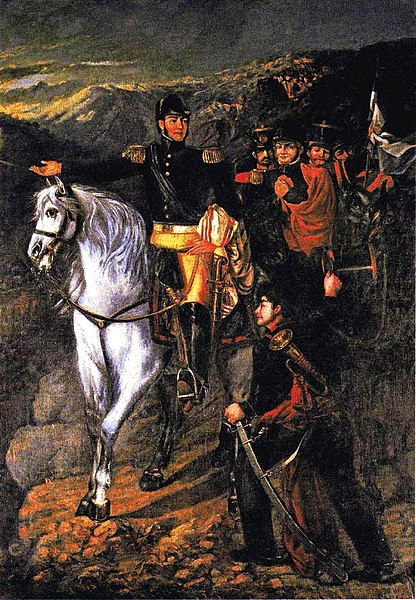Spanish reconquest of New Granada
The Spanish reconquest of New Granada in 1815–1816 was part of the Spanish American wars of independence in South America. Shortly after the Napoleonic Wars ended, Ferdinand VII, recently restored to the throne in Spain, decided to send military forces to retake most of the northern South American colonies, which had established autonomous juntas and independent states. The invaders, with support from loyal colonial troops, completed the reconquest of New Granada by taking Bogotá on 6 May 1816.
Pablo Morillo, Commander-in-chief of the combined Spanish-Venezuelan expeditionary force.
Spanish American wars of independence
The Spanish American wars of independence took place throughout Spanish America during the early 19th century, with the aim of political independence from Spanish rule. Struggles for sovereignty in both hemispheres began shortly after the outbreak of the Peninsular War as a front in the larger Napoleonic Wars, between royalists who favored a unitary monarchy, and patriots who favored either plural monarchies or republics. Thus, the strict period of military campaigns would go from the Battle of Chacaltaya (1809), in present-day Bolivia, to the Battle of Tampico (1829) in Mexico.
Image: Congreso de Cúcuta
Image: Cruce Andes 1
Spanish regular and irregular forces fighting in the Somosierra Pass against a French invading army
Deputies of Cortes of Cádiz by territories





